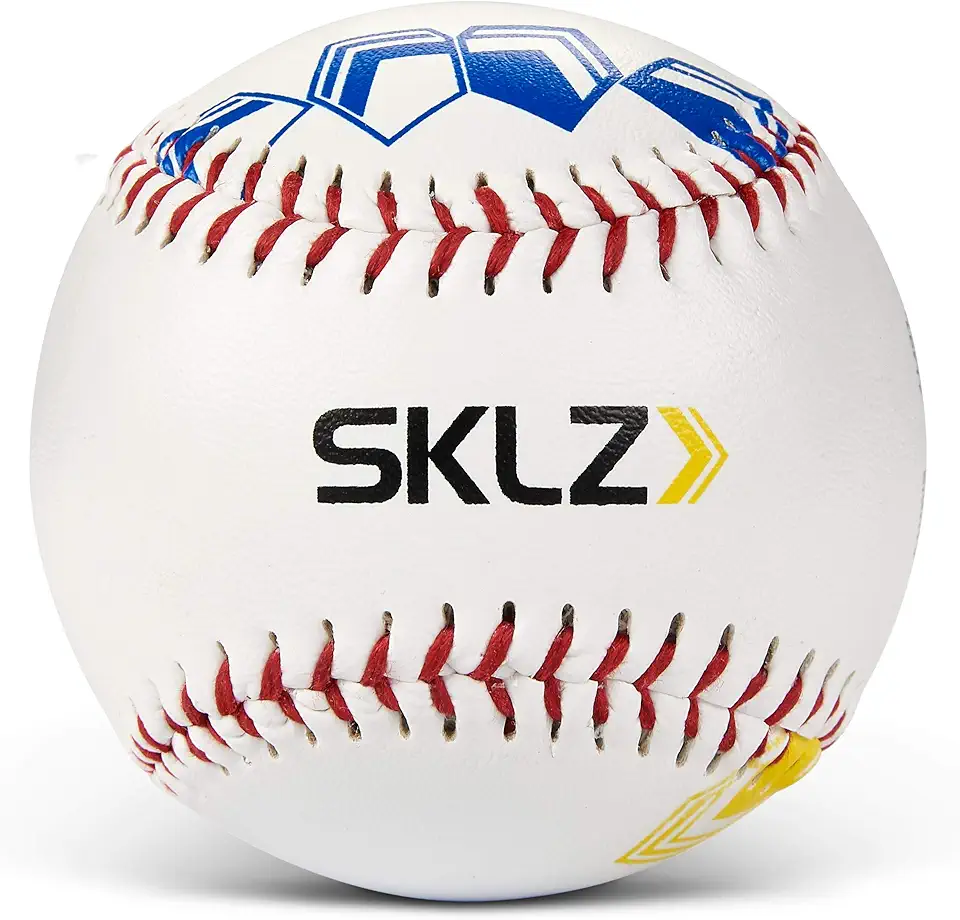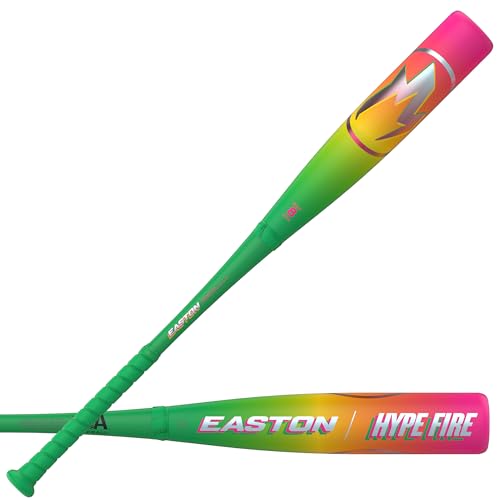Introduction
Welcome to your comprehensive guide to baseball equipment for 2025! Whether you’re a new parent trying to equip your child for their first tee-ball game, a seasoned athlete looking to enhance your skills, or a coach aiming to provide the best tools for your team, this guide is tailored for you.In this buying guide, we’ll delve into the various categories of baseball equipment including bats, gloves, training tools, nets, and more. We’ll explore what you need to know to make informed decisions about each item. You'll learn about the critical features to consider, the important terminology related to baseball gear, and our top product recommendations that fit various budgets and skill levels.
So, let’s gear up and hit the field with confidence!
Understanding Baseball Equipment
Baseball equipment consists of various tools and gear designed to enhance the performance of players during practice and games. Each piece of equipment serves a specific role in helping players develop their skills, from hitting and pitching to fielding and base running.Types/Categories of Baseball Equipment
- Bats: The primary tool for hitting the baseball. Available in various materials like aluminum, composite, and wood, each type offers different advantages and is suited for specific levels of play.
- Gloves: Essential for fielding, gloves come in different styles, including infield, outfield, pitcher, and youth gloves. Each design is tailored for specific positions.
- Training Tools: Gear such as batting tees, weighted balls, and pitching aids focused on skill enhancement.
- Nets and Backstops: Useful for practice sessions, helping to contain balls during drills.
- Practice Balls: Available in leather, synthetic, or even softballs, these are the key tools used during training and games.
Key Terminology
Understanding some key terms is essential for navigating the world of baseball equipment:- BBCOR: Stands for Bat-Ball Coefficient of Restitution; standard for high school and college bats that limits the trampoline effect of the bat.
- Drop: The difference between the bat's length in inches and its weight in ounces. A higher drop means a lighter bat that can be swung faster.
- Grip: Refers to the area where a player holds the bat or glove; it's essential for control and handling.
- Pocket Depth: In gloves, this refers to how deep the pocket is; crucial for fielders, especially those in the infield.
Key Features to Look For
When purchasing baseball equipment, consider these important buying criteria to ensure quality and performance:- Material Quality: High-quality materials result in better performance and durability. For bats, composite materials provide better flex and power, while aluminum offers greater durability.
- Durability and Lifespan: Consider how often the equipment will be used. High-frequency use requires gear that can withstand the wear and tear over time.
- Weight and Balance: The right weight and balance affect your swing speed for bats and reaction times for gloves. The drop rating helps you choose a bat that fits your power and swing style.
- Fit and Comfort: Ensure gloves fit properly, allowing for movement and control. Bats should feel comfortable in your hands during swings to avoid strain.
- Adjustability: Equipment like batting tees should have adjustable height settings, allowing players of all ages to benefit from them.
- Portability and Storage: If you plan on taking tools to practices or games, select equipment that is easy to transport and store.
- Brand Reputation and Warranty: Well-established brands often provide reliable products backed by warranties. Look for products that offer a good warranty to ensure you’re covered in case of defects.
- Price-to-Performance Ratio: Weigh how much you’re willing to spend against what features and durability you’ll receive. Sometimes, spending a little more offers better long-term value.
Types of Baseball Equipment
Let’s break down the various styles and categories of baseball equipment, examining their pros and cons along with their ideal users:1. Bats
- Aluminum Bats: Excellent for power hitters, durable but can produce a different feel compared to wood.
- Composite Bats: Offer better performance and feel but often come at a higher price. Great for players looking for optimized hitting.
- Wooden Bats: Used mainly by professionals, these provide a traditional feel and are often required in leagues. However, they can break more easily than aluminum or composite options.
- BBCOR Bats: Designed for higher levels of play, these bats meet regulations that limit their power without compromising performance.
2. Gloves
- Infield Gloves: Smaller and designed for quick ball transfers; perfect for shortstops and second basemen.
- Outfield Gloves: Larger and with deeper pockets for catching fly balls; suitable for all outfield positions.
- Pitcher Gloves: Often closed to keep the pitcher's grip concealed; helps disguise the pitch.
- Youth Gloves: Smaller sizes for children, often made from synthetic materials for ease of use.
3. Training Tools
- Tee Stands: Essential for hitters to practice their swing without a live pitch. Look for adjustable height for different players.
- Weighted Balls: Used for improving strength and arm mechanics, these are ideal for players looking to enhance their pitch speed.
- Hitting Aids: Devices designed to help with swing mechanics and contact quality.
4. Nets and Backstops
These are versatile tools for practice sessions, often used in backyard setups. Look for easy assembly and portability for optimal use.5. Practice Balls
- Leather Balls: More traditional and often used in competitive play; usually hold up well against high-velocity hits.
- Synthetic Balls: More economical and often used for practice since they can be more durable against wear.
- Softballs: While primarily used in softball leagues, youth players may also practice with them for fun.
Our Top Recommendations
To make your search easier, here’s a list of our top picks across various categories:Best Overall:
This training set stands out due to its emphasis on contact hitting. The bat is 30 inches long, designed for young players, and comes with 30 balls for practice. Pros: Great for contact batting and skill development; ideal for young hitters. Cons: May not be suitable for power hitters looking for a heavier bat.
Best Budget Option:
An economic batting tee that’s adjustable in height and lightweight. Pros: Portable and easy to store; durable for frequent use. Cons: Simpler features may not appeal to advanced players.
Best Premium Choice:
This glove offers professional-quality craftsmanship with a deep pocket and tartan 4 webbing, perfect for serious pitchers. Pros: Exceptional quality and durability; designed for performance. Cons: Higher price point may not be accessible for all players.
Best for Hitting Practice:
A versatile hitting tee with an adjustable height and heavy-duty frame. Pros: Good for all ages; sturdy for consistent use. Cons: Requires assembly before use.
Best for Youth Players:
A well-designed glove sized for younger players, allowing for easy use and skill development. Pros: Perfect size for youth; comfortable fit. Cons: Limited features for advanced players.
Best for Pitching Training:
Weighted balls that come in different weights to improve pitch mechanics and strength. Pros: Versatile for both baseball and softball; enhances pitching skills. Cons: Requires supervision to ensure safety during use.
Best for Contact Batting:
This set is perfect for honing contact skills, with a thin stick design to emphasize hitting mechanics. Pros: Ideal for drills and focusing on contact; lightweight. Cons: Not suitable for power hitting practice.
Best for Practice Nets:
A portable net for practicing throwing or batting, complete with strike zone markers for aiming. Pros: Easy to set up at home; valuable for individual practice sessions. Cons: Best suited for casual training, might not stand up to professional use.
How to Choose the Right One for You
Choosing the right baseball equipment can be simplified by evaluating your needs through these criteria:- By Budget: Consider whether you’re looking for budget-friendly options or are willing to invest in premium gear.
- By Use Case: Think about what you primarily need the equipment for: hitting, pitching, or fielding.
- By Skill Level: Assess whether the player is a beginner, intermediate, or advanced, as this influences the choice of equipment.
- By Space/Portability Needs: Identify if you need items suited for indoor or outdoor use, and whether portability is an essential feature.
Budget Considerations
Understanding the price ranges for various baseball equipment is crucial to ensure you find what best fits your needs:- Gloves: Typically range from $20 to $100, depending on material and quality.
- Bats: Prices can vary widely from $50 to over $200, especially for advanced technology models.
When it comes to where to invest, prioritize purchasing a quality glove that fits well, while for bats, you may find impressive options at lower price points for beginners.
Quick Comparison Table
| Product | Type | Price Tier | Best For |
|---|---|---|---|
| Franklin Sports MLB Training Bat + Balls | Training Set | Mid-Range | Contact Hitting |
| Diamond USSSA Dol-1 Leather Baseballs | Practice Balls | Budget | Drills and Games |
| FDLS Batting Tee | Training Tool | Budget | Hitting Practice |
| SKLZ Pitch Training Baseball | Training Tool | Mid-Range | Pitching Mechanics |
| Rawlings PLAYERS Glove | Glove | Budget | Youth Players |
| GoSports Weighted Balls | Training Tool | Mid-Range | Power and Mechanics |
| Franklin Sports Fielding Glove | Glove | Mid-Range | Infield/Outfield |
| Wilson Pitcher’s Glove | Glove | Mid-Range | Pitching |
| Mizuno Pitcher’s Glove | Glove | Premium | Professional Use |
| BAGAIL Practice Net | Net | Mid-Range | Home Training |
FAQ
- What’s the difference between a BBCOR and a youth bat? BBCOR bats are designed for high school and collegiate levels, limiting performance for safety purposes, whereas youth bats offer more flexibility for developing players.
- How do I choose the right glove size for my age/position? Refer to sizing charts specific to gloves and consider the player's age and position to determine the appropriate size and style.
- Are composite bats better than aluminum for power hitting? Generally, composite bats offer better performance due to their flex, but aluminum bats can provide consistent pop for power hitters as well.
- Can I use a training tee for softballs? Yes, if the tee is adjustable and can accommodate the size of a softball, it can be used effectively for practice.
- How often should I replace my batting gloves? Depending on usage, inspect your gloves regularly for signs of wear. Replace them when they start to lose grip or feel uncomfortable.
- What’s the best way to store baseball equipment? Keep the gear in a dry, cool place, preferably in a dedicated sports bag or bin to protect against damage and ensure longevity.
- Are weighted balls safe for beginners? Yes, but they should only be used with proper supervision and following guidelines to prevent injury.
- How do I clean and maintain a leather baseball? Use a damp cloth to wipe down the ball; avoid excessive moisture and store it in a dry place for longevity.
- What’s the best budget-friendly batting tee? Options like the FDLS Batting Tee provide essential features without the premium price.
- How do I determine the right drop rating for my bat? Assess the player's weight and strength; generally, younger and smaller players benefit from a higher drop for better swing speed.
Final Buying Advice
To summarize, focus on finding durable equipment tailored to the player's skill level and intended use. Remember to prioritize comfort and fit, as these factors can significantly enhance performance on the field.For most people, our top pick remains the Franklin Sports MLB Training Bat + Balls, given its versatility and user-friendly design, making it perfect for contact practice.
To secure the best deal, consider checking out seasonal sales, online retailers, and local sports stores where you can observe products firsthand. Happy shopping and may your baseball journey be filled with success!

















